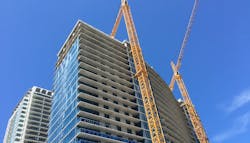Energy modeling payback typically as short as one to two months
Energy modeling that includes calculating the operational energy savings that accrue after an initial capital investment, has a quick payback—typically one-to-two months, according to Anica Landreneau, director of sustainability consulting with architecture and engineering firm HOK.
With the rule of thumb of a three year or shorter payback to make energy conservation measures cost-effective, modeling is a “no-brainer,” Landreneau told attendees at the Department of Energy’s Better Buildings Summit in Washington, D.C.
For large buildings, modeling costs run from $30,000 to $200,000 depending on the energy conservation measures considered and the tools used to evaluate them. Even the high side of that range is a fraction of the annual energy costs of a typical large building.
Landreneau said modeling is a key tool in maintaining the HOK’s global standing as a high-performance leader. HOK also sees modeling as a mechanism for shifting investment from a building’s active, mechanical systems to its passive, architectural elements.
